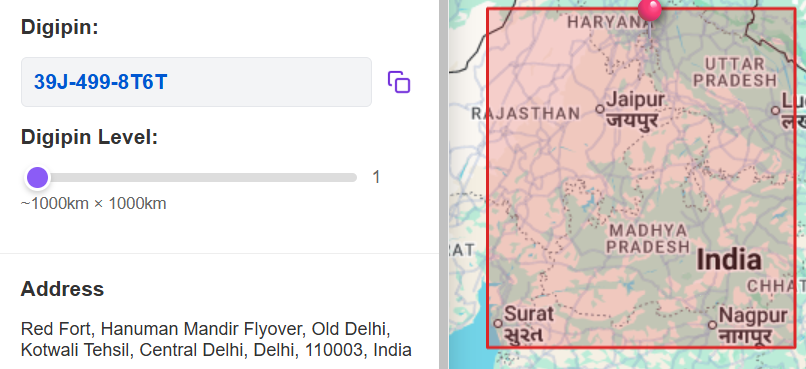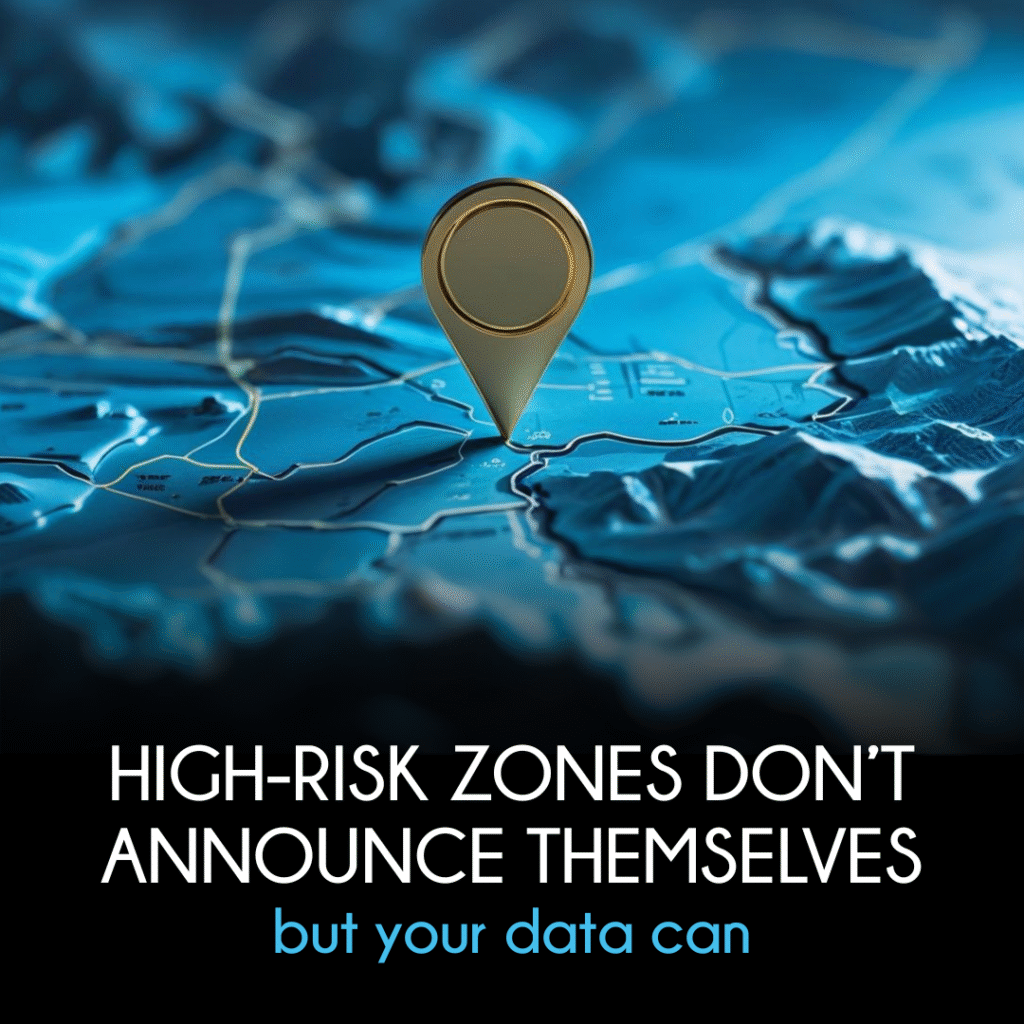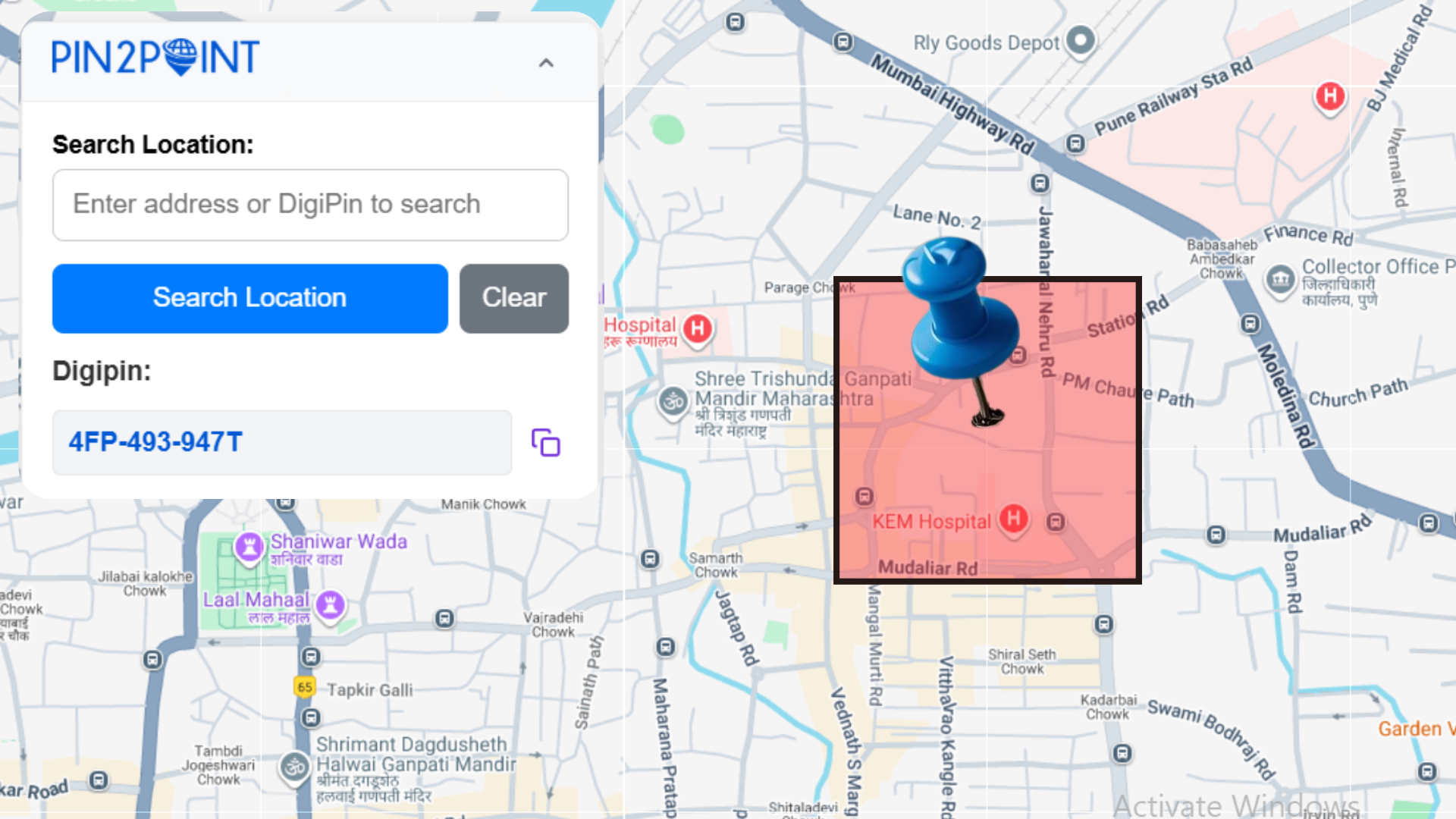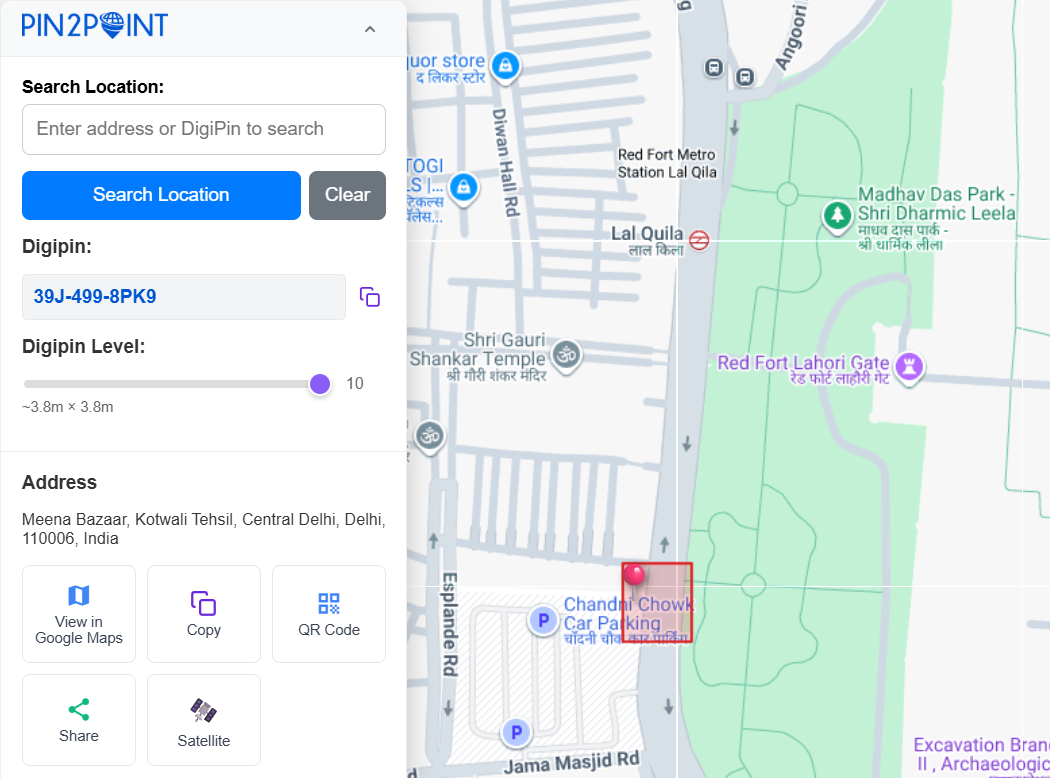In our last blog, we introduced you to DigiPIN, the 10-character alphanumeric code that can pinpoint your location to within a few meters. Now, let’s discuss how DigiPIN works.
Where your regular PIN code might cover an entire town, your DigiPIN is unique to your exact spot as small as a 4m x 4m square!
For more details you can check out our blog, ‘What is DigiPIN?’
And here’s where Pin2Point comes in: while DigiPIN is the code, Pin2Point helps you use it.
It turns any address into a unique DigiPIN through bulk upload or API. It helps businesses instantly calculate distances, spot high-risk zones, reduce untraceable addresses, and streamline deliveries and collections. By highlighting areas with frequent returns, it makes operations faster, smarter, and more efficient.
How does DigiPIN work?
Here’s the simple version of the tech:
- India’s map is divided into a massive grid of squares.
- Every square (4m x 4m) is given a unique number based on its exact latitude and longitude.
- That number is then encoded into a 10-character alphanumeric code that is your DigiPIN.

This fixed length keeps it consistent, whether it’s for a house in Delhi or a tea shop in Assam.
So when you generate a DigiPIN, you’re essentially translating GPS coordinates into something short, readable, and standardised.
How does DigiPIN generate?
DigiPIN can be generated in two ways:
- Forward conversion: You enter your address into a system like Pin2Point, which finds the location on the map and converts it into a DigiPIN.
- Reverse lookup: You have a DigiPIN, and the system converts it back into a map location (or full address).
How can I find my DigiPIN?
The easiest way?
Pin2Point’s DigiPIN Finder
Just type in your address, and we’ll instantly give you the DigiPIN.
No guesswork, no confusing map navigation, just your exact code in seconds.
Does it store my personal details?
No, DigiPIN is location-only. It stores no personal data, so it can’t be sold to third parties.
It’s like giving someone a map point without giving them your name, phone number, or email.
Is DigiPIN accurate?
Because each DigiPIN represents a 4m x 4m square, the accuracy is within a few meters. Enough to guide someone to the right door, not just the right street.
When the address entered is correct, the DigiPIN generated is also correct, errors happen only if the source address is incomplete or inaccurate.
DigiPIN vs PIN code
Before we get into how DigiPIN works, let’s talk about the difference:
- PIN code: 6 digits, created in 1972 for postal sorting. One PIN can cover up to 170 square kilometers.
- DigiPIN: 10 characters (letters + numbers), each one unique to a 4m x 4m square. (almost the size of a room!)
In other words, your PIN code says “somewhere in this big area,” while your DigiPIN says “exactly here.”
Do I still need my old PIN code?
Yes, for now. DigiPIN works alongside your existing PIN code and address. Over time, as adoption grows across delivery services, government records, and banking, DigiPIN may take centre stage. Until then, you’ll likely use both.
DigiPIN vs Latitude & Longitude
You might be thinking isn’t this just GPS coordinates?
Not exactly. Latitude and longitude (lat, long) can be precise, but they’re:
- Long and hard to remember (try reading 17.3850° N, 78.4867° E over the phone)
- Prone to typos that completely change the location
- Not optimised for postal or business use
DigiPIN takes those same lat long points and converts them into a short, human-friendly code that’s easier to store, share, and type, that too without losing accuracy.
DigiPIN Uses & FAQs
1. Can I create DigiPIN for multiple locations I own?
Yes. And with Pin2Point, you can go a step further. Store all those locations in one place and even calculate the distance between them.
This is especially useful for:
- Businesses with multiple branches
- Logistics hubs and delivery points
- Real estate mapping and property management
2. How can my company store and use DigiPINs in bulk?
With Pin2Point’s bulk upload feature, you can:
- Upload hundreds of addresses at once
- Get DigiPINs for all of them instantly
- Store them securely for future use
- Link them to customer records for delivery, service, or verification purposes
3. How does it compare to location services we already use?
Google Maps can show you a location, but it:
- It can’t generate your DigiPIN yet or give an address from a DigiPIN
- No bulk conversion
- Isn’t optimised for postal and compliance needs

Pin2Point with DigiPIN
- A consistent, official location code
- Offline usability in low-network areas
- Bulk management and analytics
- Seamless integration into banking workflows
The bottom line
DigiPIN is more than just a code. It’s a smarter, simpler, and more accurate way to represent any location in India.
Hope you now have a good understanding of how DigiPIN works.
With a fixed 10-character format, GPS-level accuracy, and offline capabilities, it’s built for the future of quick verification, accurate planning and navigation.
And with Pin2Point, that future isn’t far off, it’s already here.

